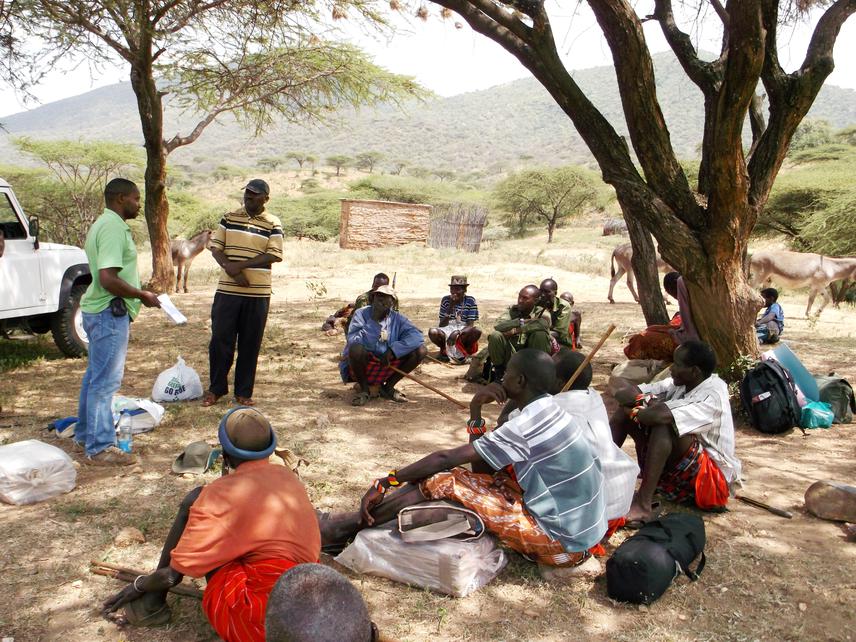Peter Fundi Njagi
The project will assess extent of anthropogenic activities within Mathews range forest reserve and how they have influenced habitat preference for Percival’s colobus and seek community driven conservation solutions.

Peter with the help of community wildlife officer (Tom Letiwa) addressig a community meeting at Nkare Narok
Pastoral communities have over the years been known for their coexistence with wildlife and sensitive use of natural resources. This trend is however changing due to the changing global climate and the consequent prolonged droughts within the rangelands. With drought being a regular phenomenon in semi-arid lands, adaptation options and other strategies for pastoralists to reduce the adverse impact of drought are therefore crucial. The uncertainties in drought occurrences, however, reduce the ability of pastoral communities to cope using traditional strategies. The result has been movement of livestock and people into communally owned land in search of water and pasture during prolonged drought periods. Mathews range forest reserve is one such land owned by the Samburu community and they have constantly used the forest as a fallback grazing area. They feed the cattle on leaves of evergreen trees by cutting branches and often denuding the trees. They also extract non-timber products from the forest altering the habitat of the endangered and endemic Percival’s black and white colobus (Colobus guereza ssp. percivali).
This project seeks to evaluate the extent of these activities within the high altitude areas of the forest and understand their impact on habitat preference by Percival’s colobus. This will be crucial in formulating long lasting community driven solutions to save a species already on the verge of extinction. These solutions will be generated by holding community workshops, interviewing key informants (elders and local leaders) and other stakeholders involved directly and indirectly in conserving the forest. The immediate intervention to be suggested will be creation of dry season grazing blocks within the forest.
The project will however, evaluate long term measures by exploring alternative sources of pasture. These will include; growing of leguminous pasture species such as Leucaena sp. and Rhodes grass (Chloris gayana) for storage, harvesting and storage of animal forage during wet season, range reseeding and a combination these approaches with suggestions of proper livestock stocking rate.